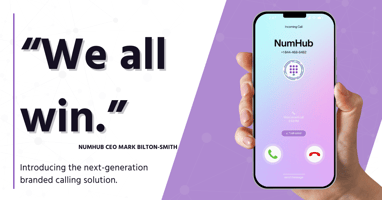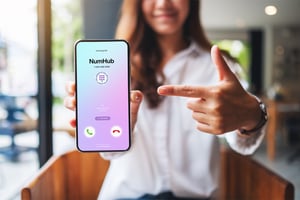The Phone Call is Broken. But, Branded Calling is Fixing It.
Juniper Research predicts that global losses to telecommunications fraud will hit its peak this year, reaching over $80 billion.
According to a recent Future Branches Insights report sponsored by Somos, one hundred leaders from financial institutions were surveyed and 63% reported that telecommunications fraud and scams have increased.
Earlier this year the Federal Trade Commission reported that in 2024 fraud rose by 25% from the prior year with consumers reporting more than 12.5 billion lost to fraud. The second most reported contact method for committed fraud was by phone call.
For businesses, this translates into missed opportunities, lower engagement, and a disconnect between brands and their audiences because their customers are no longer answering their phones.
The Trust Gap in Phone Communications
The root of the problem lies in the erosion of trust. Traditional caller ID systems, especially CNAM databases, were never designed for the mobile-first world. They often show inconsistent or incorrect caller names, are easily spoofed, and lack the branding elements needed to convey trust and legitimacy.
Even with the introduction of STIR/SHAKEN, which authenticates the originating number of a call, consumers remain skeptical. STIR/SHAKEN validates who is calling, but not why they are calling or what brand they represent. This failure of CNAM was called out in the recent FCC Eighth Report & Order.
This is where branded calling solutions come in.
What is BCID?
Branded Calling ID™ is a CTIA-governed, industry-backed branded calling framework designed to restore trust in voice communications by allowing verified businesses to display their name, logo, and reason for calling directly on a consumer’s phone screen. It integrates with STIR/SHAKEN protocols and uses cryptographic signatures to ensure that only vetted businesses can brand calls, effectively eliminating spoofing and mislabeling.
BCID: A Game-Changer for Businesses and Consumers Alike
BCID does more than add a brand name to a call. It changes the entire dynamic of voice interaction:
-
Consumer Confidence: When consumers recognize a trusted brand on their screen, they’re far more likely to answer.
-
Increased Answer Rates: Verified branded calls see significantly higher pickup rates, which means more successful interactions and better ROI.
-
Fraud Prevention: Spoofers and bad actors can’t access the ecosystem unless vetted and cryptographically verified.
-
Transparency: Open, non-monopolistic standards governed by CTIA ensure fair pricing and broad accessibility.
Limitations of Legacy Branded Calling Solutions
Before BCID, branded calling solutions were fragmented, closed, and monopolized by vendors with proprietary systems. These models:
-
Operated outside the call path, making them vulnerable to spoofing
-
Locked businesses into opaque pricing structures
-
Lacked standard governance and oversight
-
Offered limited branding capabilities and poor user experience
As a result, only about 5,000 U.S. businesses have adopted branded calling, leaving more than 32 million without access to a trusted solution. BCID aims to change that.
NumHub's BrandControl Platform
NumHub has launched BrandControl, a SaaS platform that simplifies BCID adoption for all stakeholders:
-
CSPs, OSPs, UCaaS & CCaaS Providers: Gain full control over pricing, branding, and customer relationships with a white-label platform.
-
Enterprise Businesses: Manage logos, display names, and call reasons through an easy-to-use portal.
The platform also ensures automated compliance with FCC mandates and CTIA standards, reducing legal risk and boosting brand integrity.
A Look Ahead: BCID as the New Standard
With networks like T-Mobile already live and others like Verizon and AT&T preparing to launch, BCID is rapidly becoming the preferred framework for branded calls. CTIA’s governance ensures a fair, secure, and scalable approach to branded identity, and the FCC’s regulatory pressure is only increasing.
Industry thought leaders agree: the old way of doing caller ID is over. BCID is the future.



